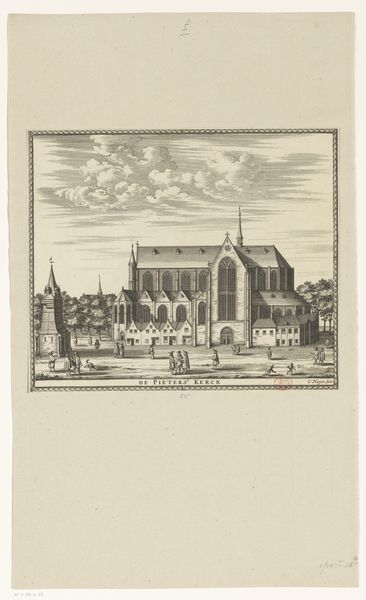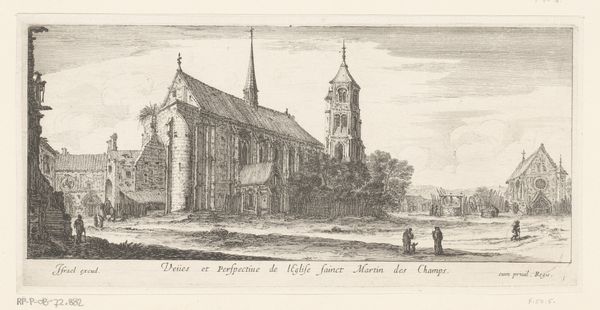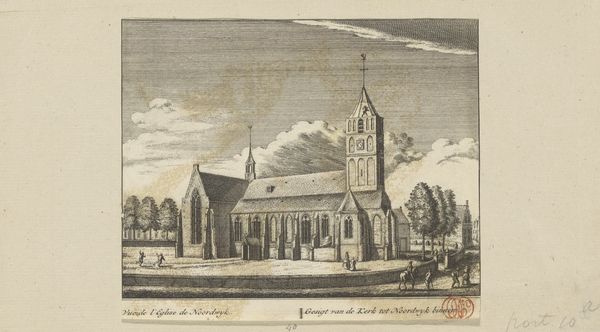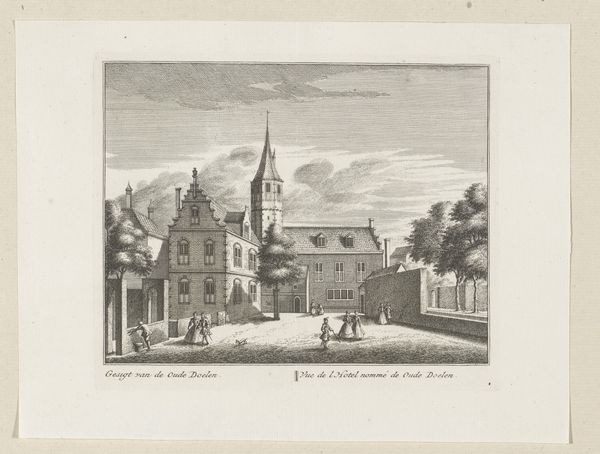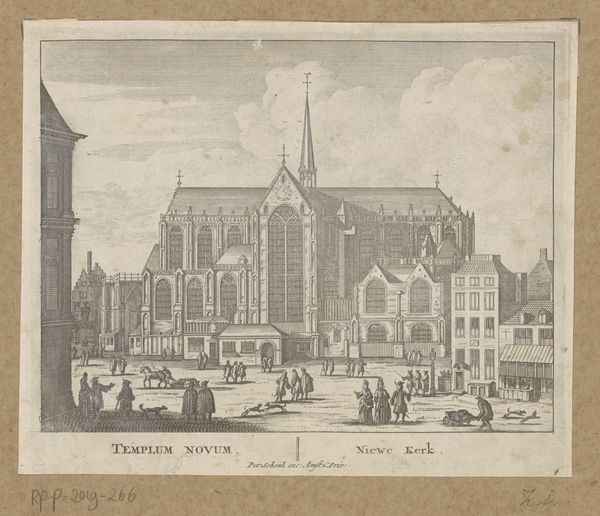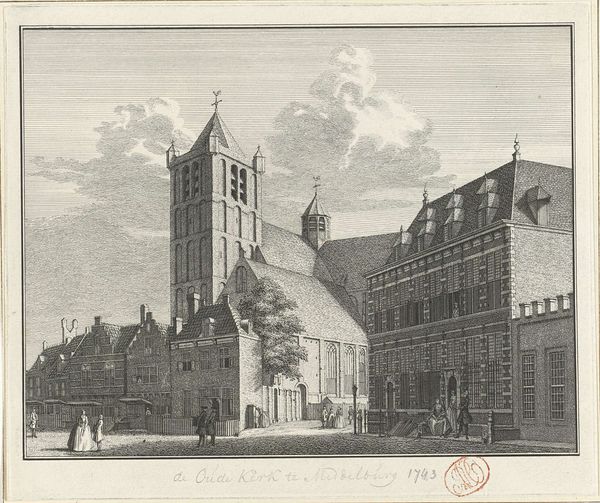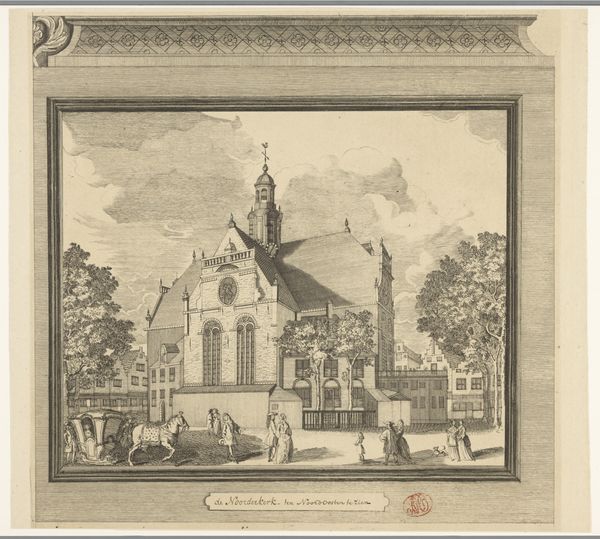
print, etching, architecture
#
baroque
# print
#
etching
#
etching
#
cityscape
#
architecture
Dimensions: height 159 mm, width 206 mm
Copyright: Rijks Museum: Open Domain
Curator: Hendrick Spilman created this etching, titled “Gezicht op de Buurkerk te Utrecht,” sometime between 1744 and 1758. It's a striking cityscape of the Buurkerk church in Utrecht. Editor: My first impression is of its intricate, almost delicate lines. It's fascinating how the artist used such a sparse medium to create such depth and texture. Curator: It’s quite a feat of technical skill. Spilman captures not just the building, but a sense of Utrecht as a religious, social, and economic hub. The Buurkerk played a pivotal role in the city's religious life, especially within the context of the Reformation and evolving religious freedoms in the Netherlands. The figures populating the foreground really bring this to life. Editor: Agreed. Looking at the labor involved—the repetitive, careful etching—you get a sense of the social context. Printmaking like this was how information, including views and representations of power like the church, circulated. It was a means of visual production and consumption. Curator: Precisely! It reflects the power dynamics of the time—the Church's enduring influence even as societal shifts took place. Consider also the position of women, suggested by their presence in the etching, participating in public life but still subtly marked by societal constraints. The inclusion of different social classes outside the building speaks volumes. Editor: Absolutely. The details tell us about more than just architecture; the surrounding activity reveals the church's function as a gathering place, a central point of civic life. How interesting that this perspective omits any hint of the burgeoning merchant activity happening at the same time, given how crucial trade and production were. Curator: Indeed. By examining what is included versus what is left out, we reveal much about the narratives artists were attempting to construct or reinforce. This particular view presents Utrecht and its spiritual center in a very specific light. It could be critiqued, for example, in the light of emerging ideas regarding societal inequalities. Editor: It underscores how every visual representation is inevitably tied to the modes and meanings of its creation. Thinking about the materials involved, the acid biting into the metal plate…It really lets us see the material conditions that shaped artistic expression. Curator: Considering its broader social and intellectual background gives it profound implications for us today. Editor: Absolutely; focusing on the craft and means behind its creation lets us more clearly examine what such pieces tell us about their contemporary values.
Comments
No comments
Be the first to comment and join the conversation on the ultimate creative platform.

